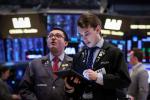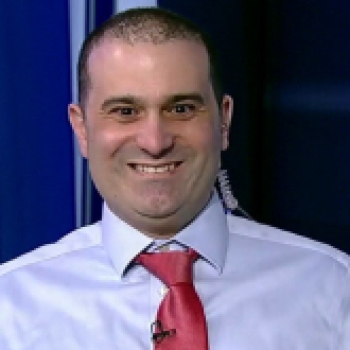
- All Instrument Types
- Indices
- Equities
- ETFs
- Funds
- Commodities
- Currencies
- Crypto
- Bonds
- Certificates
Please try another search

Australia ETFs In Focus As GDP Growth Misses Expectations

Australia’s GDP grew slower than expected by economists, as household spending saw the slowest increase since the 2008 crisis (read: Australia ETFs in Focus on Record Highs).
GDP grew 0.6% in the third quarter sequentially compared with 0.9% in the previous quarter. Moreover, it missed expectations of 0.7% growth. On a year-over-year basis, GDP grew 2.8% in the quarter compared with expectations of 3% growth.
What’s Driving GDP?
Industrial Metals have been rebounding on greater global optimism. Although exports of coal and iron ore were higher, the contribution of exports to GDP growth was flat.
Moreover, 17 out of 20 industries registered growth. Global economic activity seems to be picking, as the International Monetary Fund (IMF) estimates 3.6% and 3.7% growth in 2017 and 2018, respectively, compared with 3.2% in 2016.
However, household spending increased 0.1% in the quarter, the weakest since fourth quarter of 2008. "Household incomes are growing slowly and debt levels are high," RBA governor Philip Lowe said in a statement. Moreover, per a Bloomberg article, public investment declined 7.5% in the quarter, subtracting 0.4 points from GDP growth. This led to a decline in the Australian dollar.
Although residential construction subtracted 0.1 point from GDP growth in the third quarter, non-dwelling construction contributed 0.9 points to growth.
What Lies Ahead?
Per the Australian Bureau of Statistics, the country’s headline consumer price index (CPI) increased 0.6% in the third quarter sequentially and 1.8% on a year-over-year basis, below the Reserve Bank of Australia’s (RBA) 2% target. Australia’s housing price growth seems to have stalled, as prices fell in October.
RBA left its official cash rate intact at 1.5% in its December policy meeting. It cited low wage growth and weak inflation concerns as the reasons for this decision. Moreover, the recent weakness in GDP growth is expected to give the RBA some time to hold on to the rates. "The latest data on both wages and inflation suggests that while we have probably hit inflection points, we remain some way off from a rate rise," Lowe said.
Let us now discuss a few ETFs focused on providing exposure to the Australian economy (see all Asia-Pacific (Developed) ETFs here).
IShares MSCI Australia Index Fund EWA:
This fund is the most popular Australia ETF in the space, offering exposure to the most liquid equities in the Australian economy. It tracks the MSCI Australia Index.
This fund has AUM of $1.8 billion and charges a relatively moderate fee of 48 basis points a year. From a sector look, Financials, Materials and Real Estate are the top three allocations of the fund, with 40.7%, 17.0% and 8.5% exposure, respectively (as of Dec 4, 2017). Commonwealth Bank Of Australia, Westpac Banking Corporation and BHP Billiton (LON:BLT) Ltd are the top three holdings of the fund, with 10.3%, 8.0% and 6.8% allocation, respectively (as of Dec 4, 2017). The fund has returned 12.0% year to date and 9.5% in a year (as of Dec 5, 2017). EWA has a Zacks ETF Rank #3 (Hold) with a Medium risk outlook.
WisdomTree Australia Dividend Fund AUSE:
This ETF is another popular fund offering exposure to the Australian economy and tracks the WisdomTree Australia Dividend Index.
This fund has AUM of $37.6 million and charges a fee of 58 basis points a year. From a sector look, Financials, Consumer Discretionary and Basic Materials are the top three allocations of the fund, with 23.4%, 16.4% and 13.4% exposure, respectively (as of Dec 5, 2017). Harvey Norman Holdings Ltd, National Australia Bank Ltd and Westpac Banking Corporation are the top three holdings of the fund, with 4.2%, 2.9% and 2.8% allocation, respectively (as of Dec 5, 2017). The fund has returned 11.8% year to date and 11.0% in a year (as of Dec 5, 2017). AUSE has a Zacks ETF Rank #3 with a Medium risk outlook.
Want key ETF info delivered straight to your inbox?
Zacks’ free Fund Newsletter will brief you on top news and analysis, as well as top-performing ETFs, each week. Get it free >>
ISHARS-AUSTRAL (EWA): ETF Research Reports
WISDMTR-AUS DVD (AUSE): ETF Research Reports
Original post
Zacks Investment Research
Related Articles

The fortune of Nvidia (NASDAQ:NVDA) is closely tied to Big Tech hyperscalers. Although the AI/GPU designer didn’t name its largest clients in the latest 10-K filing on Wednesday,...

In a market fraught with uncertainty, investors often seek refuge in defensive-minded stocks that offer stability and resilience. Two such stalwarts, Johnson & Johnson and...

The United States is the largest exporter of liquefied natural gas (LNG), having surpassed Australia and Qatar in 2023. The United States exports an estimated 12.5 billion cubic...
Are you sure you want to block %USER_NAME%?
By doing so, you and %USER_NAME% will not be able to see any of each other's Investing.com's posts.
%USER_NAME% was successfully added to your Block List
Since you’ve just unblocked this person, you must wait 48 hours before renewing the block.
I feel that this comment is:
Thank You!
Your report has been sent to our moderators for review



Add a Comment
We encourage you to use comments to engage with other users, share your perspective and ask questions of authors and each other. However, in order to maintain the high level of discourse we’ve all come to value and expect, please keep the following criteria in mind:
Enrich the conversation, don’t trash it.
Stay focused and on track. Only post material that’s relevant to the topic being discussed.
Be respectful. Even negative opinions can be framed positively and diplomatically. Avoid profanity, slander or personal attacks directed at an author or another user. Racism, sexism and other forms of discrimination will not be tolerated.
Perpetrators of spam or abuse will be deleted from the site and prohibited from future registration at Investing.com’s discretion.